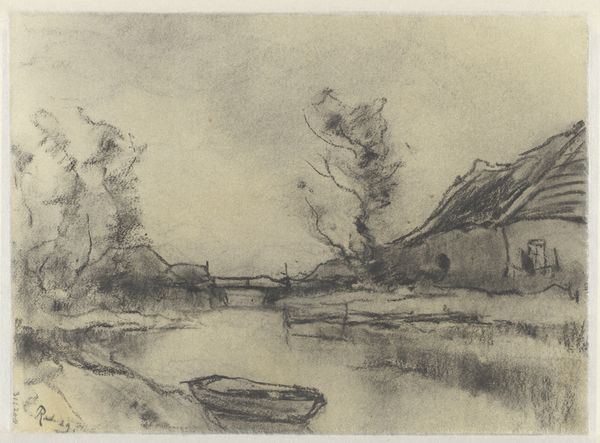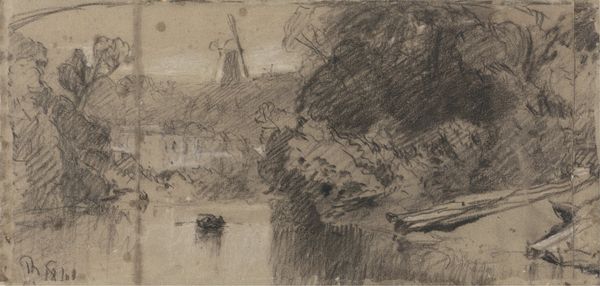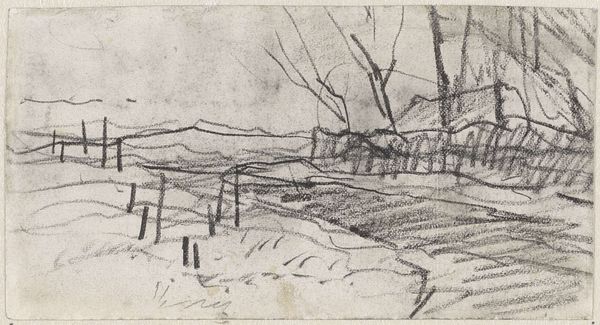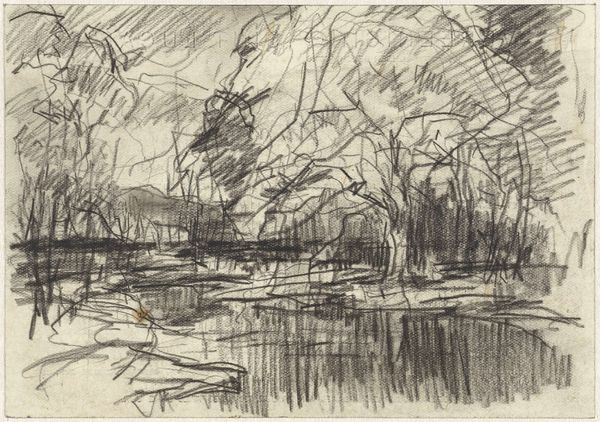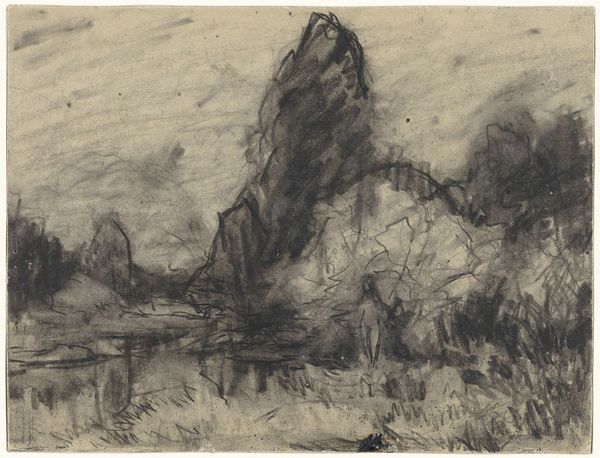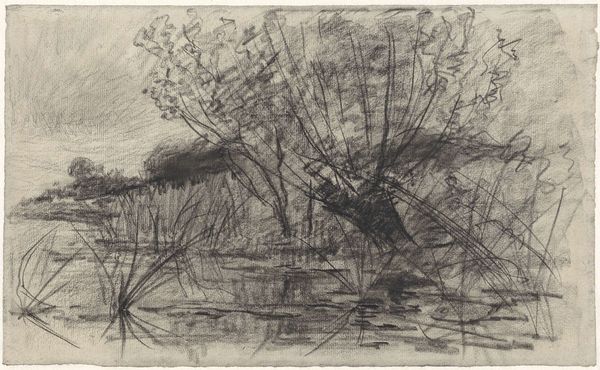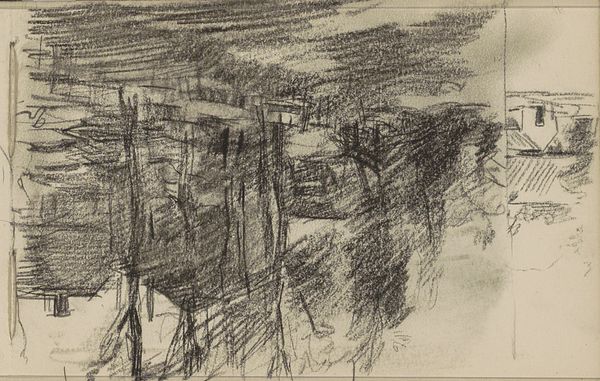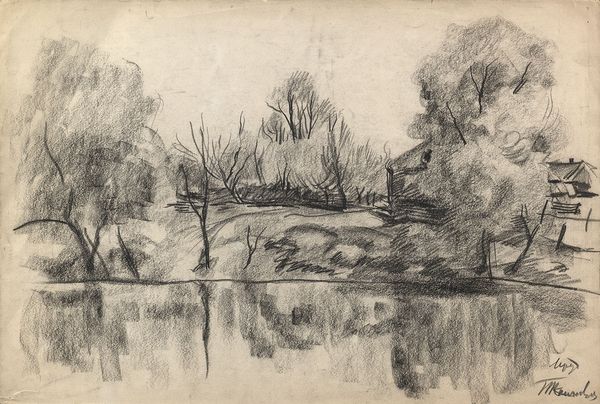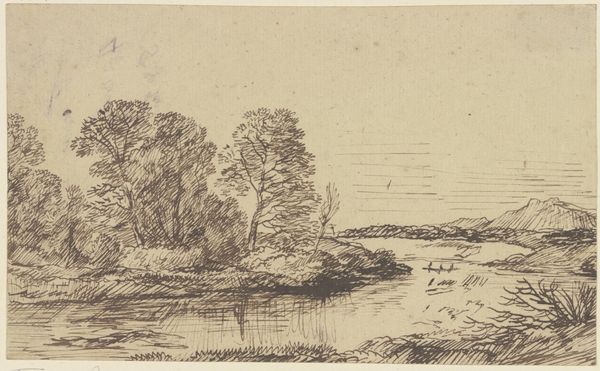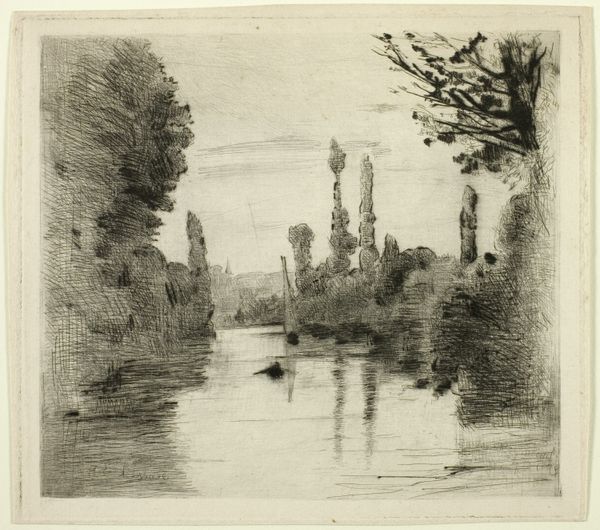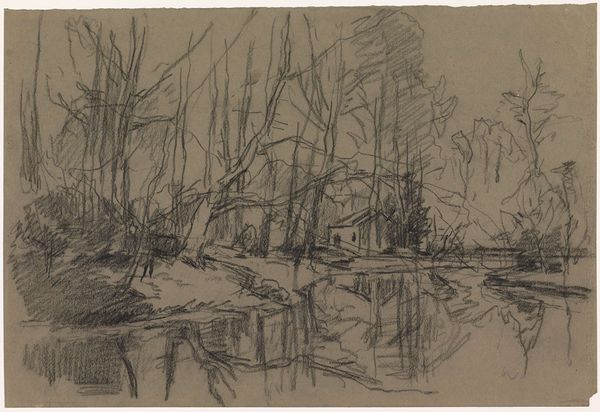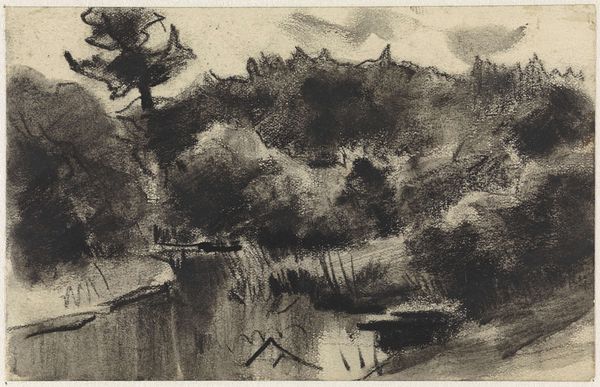
drawing, paper, ink, pencil
#
drawing
#
landscape
#
paper
#
ink
#
pencil
#
realism
Dimensions: height 105 mm, width 131 mm
Copyright: Rijks Museum: Open Domain
Curator: Immediately, I am struck by the somber mood conjured by Adolf le Comte’s “Boerderij.” It feels raw, almost desolate. Editor: Le Comte's "Boerderij", or "Farm" in English, a drawing executed sometime between 1860 and 1921, masterfully utilizes pencil, ink, and paper to depict a landscape scene. The style seems rooted in realism, though the stark tones lend it a distinctive quality. What formal elements create that sense of desolation you mentioned? Curator: For me, it’s the limited palette—essentially blacks, grays, and hints of muted green. Notice how the artist employs these shades to define the skeletal structure of the trees and the shadowed forms of the buildings, lacking intricate details, all contributing to an unsettling tone. Also the lack of strong lines and solid forms contribute to the scene's ethereal nature. What might this somber depiction say symbolically? Editor: Considering its era, one might view it as a meditation on rural life— the aging farm, rendered in tones reminiscent of fading memories, represents a fading way of life amid growing urbanization. Notice the prominent rooflines—almost mountainous against the pale sky; could these symbolize shelter, endurance, perhaps even resilience against the relentless march of time and the encroaching forces of modernization? Curator: The way the buildings and trees are nearly merging indicates a deep relationship between the natural and built environment, further enhanced by those limited colour tones which suggest their symbiosis. But from a purely compositional stance, that tight, almost claustrophobic arrangement concentrates the forms within the picture plane which reinforces the work's emotional weight. Editor: True, and observe the reflection in the water – distorted, fragmented, mirroring the world above. Perhaps reflecting how societal upheaval distorts traditional meanings. It seems less like simple representation and more like commentary through metaphor. Curator: Yes, through careful rendering, le Comte forces us to consider the inherent symbolism and formal techniques used to achieve such a visually and emotionally poignant image. Editor: Ultimately, the artwork beckons us to appreciate that symbols and artistry have the power to convey profound observations about both past eras and enduring societal challenges that remain.
Comments
No comments
Be the first to comment and join the conversation on the ultimate creative platform.
